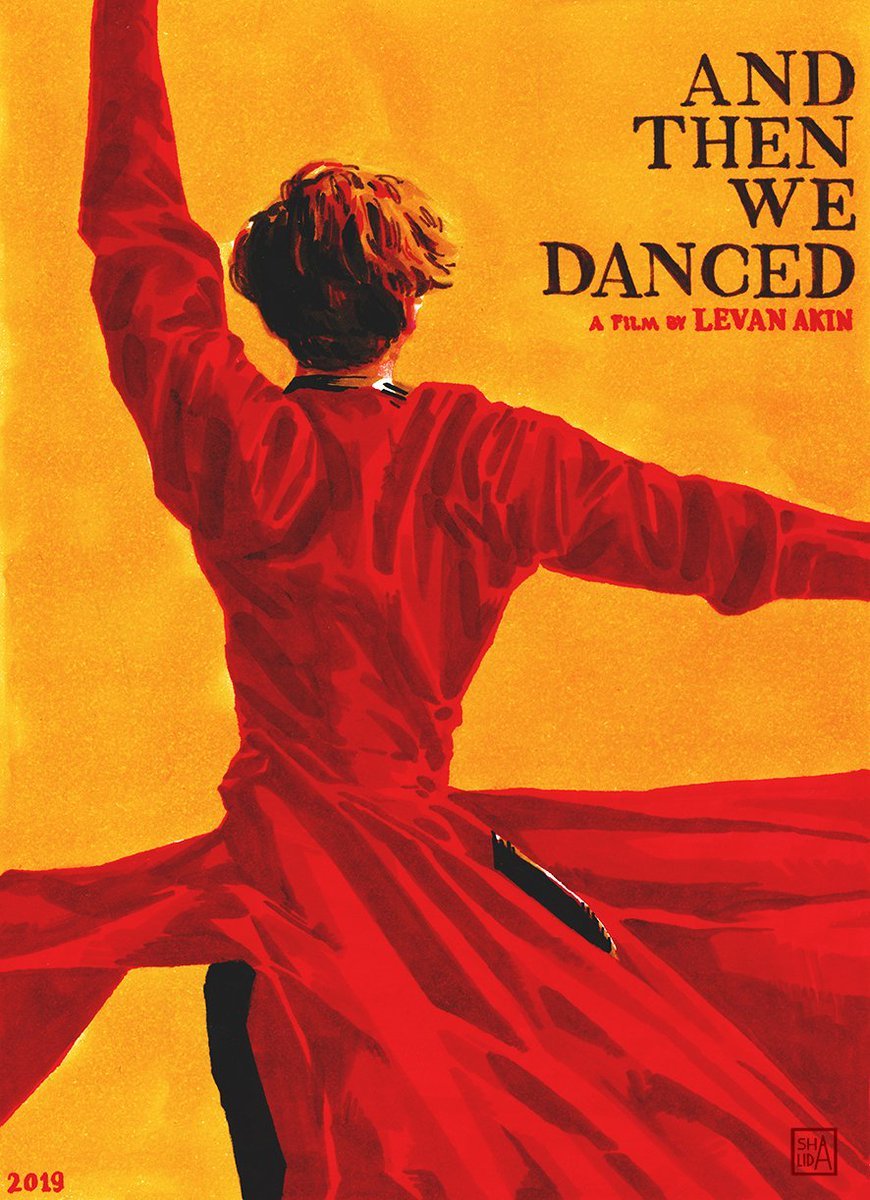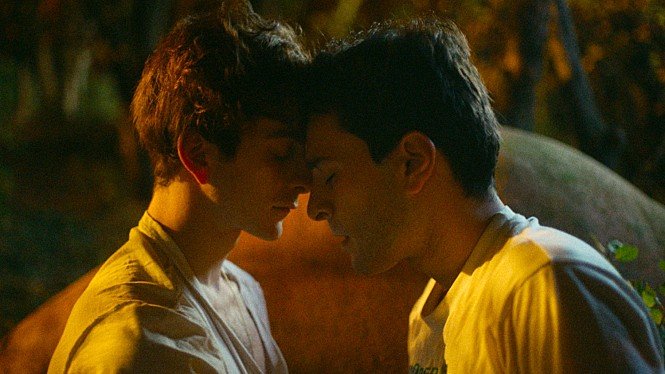And Then We Danced: Queer Coming-of-Age
“This life is not for everyone,” says the harsh Georgian dance trainer to Merab.
A few months ago, I saw And Then We Danced on a small laptop screen on my couch in New York. I have thought about it a lot since then. I probably have not seen such a beautiful and evocative film about a queer relationship in a long time, and when I recommend this film to others, I never feel I can quite convey the magic that embellishes this story. But I can try.
Set in contemporary Tbilisi, And Then We Danced tells the queer coming-of-age story of Merab, a hardworking dancer, who struggles to support his family while pursuing his passion and patriotism through traditional Georgian dance. Despite his almost lifelong training at the Georgian National Ballet, Merab’s sense of normalcy comes under attack when burly newcomer Irakli arrives as an alternate. Irakli’s rebellious charm and charisma instantly grabs Merab’s attention. Despite his initial distaste for Irakli as his competition, Merab starts to feel pulled toward him, and the two embark on a secret sensual relationship.
At the forefront, though, is dance. The film focuses on a traditional style of dance marked by its strong, rigid movements and Georgian instrumental accompaniment. Dance showcases Merab’s cultural joy, patriotism, and masculinity. With pressure from his family to succeed, Merab works tirelessly to live up to the expectations set upon him by his former dancer family members. Performing well becomes more and more difficult as his attraction toward Irakli grows. His own sense of identity is threatened, particularly his understanding of what it means to be a man. The focal point of And Then We Danced is masculinity––particularly how it interacts with queer identities, how family and culture shape it, and the many colors, shapes, and functions it serves in society. Above all else the film is a spectacle of gender and love, with beauty and passion woven through every scene. Beautifully intertwining rivalry and desire, Swedish-Georgian director Levan Akin creates a tense and tender atmosphere for this young love story to simmer and eventually boil.
Truly, the film’s production alone surmounted an unimaginable amount of pushback. Homosexuality has only been legal in Georgia since 2000, and the country still has a long way to go in supporting LGBTQ+ rights. In addition, Georgian culture idolizes masculinity, and Georgian dance functions as an extension of that tradition. Therefore, many Georgian people who pride themselves on their country and culture objected to the film and made their opinions heard. Difficulties securing shooting locations and the refusal of the principal national Georgian ballet ensemble along with other possible collaborators were just the tip of the iceberg. Security detail for the production was essential after many crew members received death threats. And, when forced to shoot in somewhat spur-of-the-moment locations, Akin felt compelled to conceal significant details of the plot from many of the non-professional actors. The harassment didn’t stop once the shooting did; neonationalist hate groups even organized protests against the Georgian premieres of the film, which eventually resulted in rioting and arrests.
As a passionate moviegoer, I am appalled by the mob-rule-enforced censorship of this film, not to mention the overt display of homophobia. If anything, this shows why we need more films like And Then We Danced which challenge the assumed narrative and reclaim it to include more identities and stories. Because really, this film was a heartfelt celebration of Georgia, not only in its depiction of the beautiful style of dance, but by way of telling the story of an unheard population. And as a queer person, I want to see more stories like this––ones that are fresh and tell you something new and engaging without throwing in your face exactly how you need to feel. I want to see films that cherish queer youth and treat them with respect and dignity while still discussing the very real hardships that they face all around the world. The ones whose lives are outlined in terror, but still somehow soak themselves in sunlight and love and dance. Akin achieves this with such skill and ease that viewers feel entranced by the sounds and movements on screen. And Then We Danced was more of a love letter than a film, one which breathed new life into the genre of coming-of-age and represented queer love in a way never successfully done before. This is a love letter that I want everyone to read.





